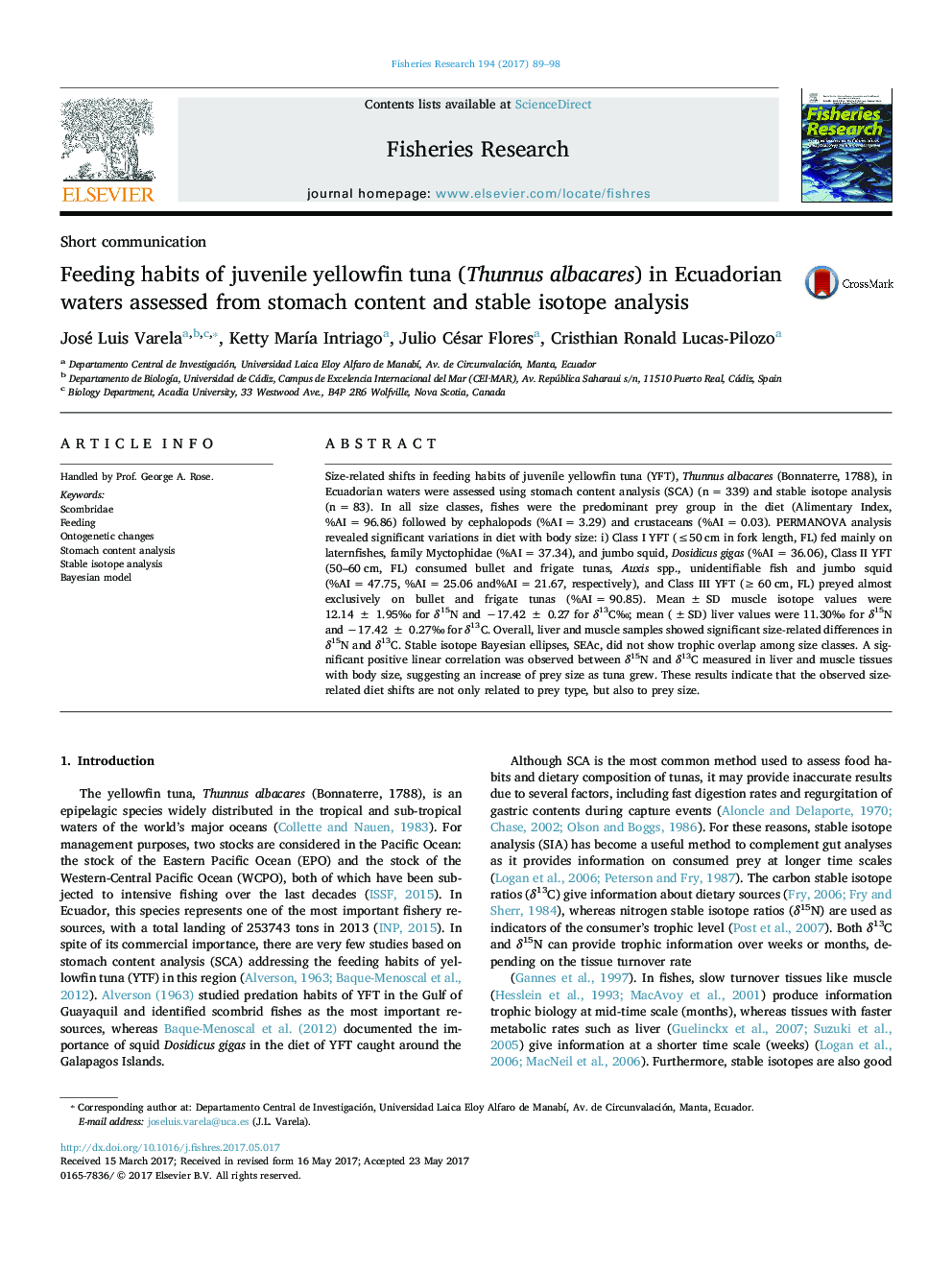| Article ID | Journal | Published Year | Pages | File Type |
|---|---|---|---|---|
| 5765419 | Fisheries Research | 2017 | 10 Pages |
Abstract
Size-related shifts in feeding habits of juvenile yellowfin tuna (YFT), Thunnus albacares (Bonnaterre, 1788), in Ecuadorian waters were assessed using stomach content analysis (SCA) (n = 339) and stable isotope analysis (n = 83). In all size classes, fishes were the predominant prey group in the diet (Alimentary Index, %AI = 96.86) followed by cephalopods (%AI = 3.29) and crustaceans (%AI = 0.03). PERMANOVA analysis revealed significant variations in diet with body size: i) Class I YFT (â¤50 cm in fork length, FL) fed mainly on laternfishes, family Myctophidae (%AI = 37.34), and jumbo squid, Dosidicus gigas (%AI = 36.06), Class II YFT (50-60 cm, FL) consumed bullet and frigate tunas, Auxis spp., unidentifiable fish and jumbo squid (%AI = 47.75, %AI = 25.06 and%AI = 21.67, respectively), and Class III YFT (â¥Â 60 cm, FL) preyed almost exclusively on bullet and frigate tunas (%AI = 90.85). Mean ± SD muscle isotope values were 12.14 ± 1.95â° for δ15N and â17.42 ± 0.27 for δ13Câ°; mean (±SD) liver values were 11.30â° for δ15N and â17.42 ± 0.27â° for δ13C. Overall, liver and muscle samples showed significant size-related differences in δ15N and δ13C. Stable isotope Bayesian ellipses, SEAc, did not show trophic overlap among size classes. A significant positive linear correlation was observed between δ15N and δ13C measured in liver and muscle tissues with body size, suggesting an increase of prey size as tuna grew. These results indicate that the observed size-related diet shifts are not only related to prey type, but also to prey size.
Keywords
Related Topics
Life Sciences
Agricultural and Biological Sciences
Aquatic Science
Authors
José Luis Varela, Ketty MarÃa Intriago, Julio César Flores, Cristhian Ronald Lucas-Pilozo,
